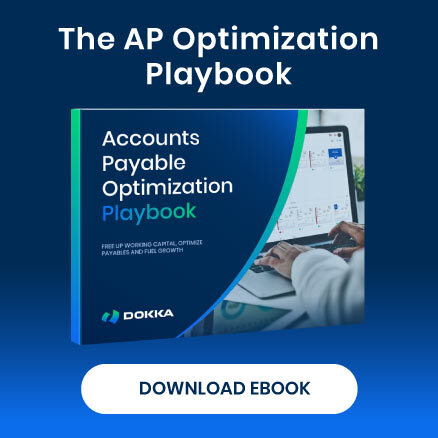Managing accounts payable is essential for keeping a business running smoothly, but mastering cash flow is key to long-term success. Cash flow is the lifeblood of any business, as Sir Richard Branson once said.
Inefficiencies in AP processes can negatively impact cash flow and compromise a company’s financial stability. Manual workflows often lead to serious challenges, such as payment delays, duplicate transactions, and errors in data entry. That’s why it’s crucial to optimize and automate accounts payable processes as much as possible.
With AP automation, you can streamline operations and enhance cash flow, maximizing the financial benefit for your business. In this guide, we’ll discuss how automating accounts payable can help you keep more money in your company.
How Accounts Payable Affects Cash Flow
Before diving further, let’s first understand why cash flow management is essential for any business.
Cash flow refers to the movement of money in and out of a company’s accounts over a given period, including both revenue generation and expenses. Positive cash flow means more money is coming in than going out, while negative cash flow represents a deficit. Maintaining positive cash flow is crucial, as it ensures there is enough money available to cover operational costs and invest in growth opportunities.
Accounts payable (AP) directly affects a company’s cash flow because it represents the amount a business owes to suppliers for goods and services received but not yet paid for.
Here’s how AP can impact cash flow:
- Delayed Cash Outflows (Positive Impact on Cash Flow)
Extending the payment period for suppliers allows a company to hold onto its cash for a longer time. The additional liquidity can be used for other operational needs, such as investing in inventory, covering payroll, or funding growth initiatives. Companies that negotiate favorable payment terms with suppliers can improve their working capital while still meeting their obligations.
- Early Payments (Negative Impact on Cash Flow)
Settling invoices before the due date reduces the amount of cash available for other expenses. However, some companies choose to make early payments to secure supplier discounts, such as “2/10 net 30,” which offers savings for paying within a short window. While these discounts can lower overall costs, frequent early payments may limit cash reserves and create liquidity challenges if not carefully managed.
- Growth and Increased AP (Temporary Boost to Cash Flow)
An expanding business often experiences a rise in accounts payable as it purchases more goods and services. Since payments are typically made after the receipt of goods, cash flow may temporarily improve during periods of growth. While this provides short-term financial flexibility, future cash outflows will increase once those payables become due. Ensuring that revenue growth aligns with increased payables helps maintain a stable financial position.
- Decreasing AP (Cash Outflow Increases)
Aggressively reducing accounts payable leads to higher cash outflows, which can reduce working capital. Large, frequent payments to suppliers can strain liquidity, making it essential to plan expenditures carefully. A sudden drop in accounts payable might indicate strong cash flow management, but it could also suggest pressure from suppliers demanding faster payments.
- Supplier Credit Terms Impact Cash Flow
The payment terms set by suppliers play an important role in determining cash flow flexibility. Extended terms, such as 60 to 90 days, allow businesses to retain cash longer and allocate it to other priorities. In contrast, strict payment terms requiring immediate or short-term settlement force companies to disburse cash quickly, potentially limiting available funds for other operational needs.
- Accounts Payable vs. Accounts Receivable
The relationship between accounts payable and accounts receivable directly affects cash flow stability. When payables increase while receivables decline, businesses may face liquidity challenges due to a mismatch between outgoing and incoming funds. Monitoring the timing of both ensures that cash inflows from customers align with payment obligations to suppliers, reducing the risk of cash shortages.
10 Ways to Maximize Cash Flow by Automating Accounts Payable
Effective AP management contributes to better cash flow control and overall financial stability. Businesses that optimize their payment strategies can improve working capital efficiency while ensuring they meet financial commitments on time.
Automating accounts payable processes can further streamline operations and enhance cash flow management.
Here are 10 ways to maximize cash flow by automating accounts payable:
- Real-Time Visibility into Payables
- Reducing Costs and Improving Efficiency
- Optimizing Payment Scheduling
- Capturing Early Payment Discounts
- Avoiding Late Payment Fees and Penalties
- Enhancing Cash Flow Forecasting
- Streamlining Approval Workflows
- Strengthening Vendor Relationships
- Minimizing Errors and Strengthening Financial Security
- Speeding Up Invoice Processing for Better Cash Flow Management
1) Real-Time Visibility into Payables
Gaining a clear picture of financial obligations is essential for maintaining healthy cash flow. Automated accounts payable (AP) solutions provide real-time insights into outstanding invoices, upcoming payments, and overall cash flow status.
Digital dashboards and analytics tools allow finance teams to track expenses with precision, make proactive financial decisions, and avoid cash shortfalls that could disrupt operations.
2) Reducing Costs and Improving Efficiency
Processing invoices manually requires significant time, labor, and resources, driving up operational costs. Automation eliminates inefficiencies by streamlining data entry, approvals, and record-keeping.
Businesses can cut down on paper expenses, reduce administrative workloads, and minimize the risk of duplicate or lost invoices, ultimately lowering the cost per invoice and freeing up resources for higher-value tasks.
3) Optimizing Payment Scheduling
Managing the timing of outgoing payments strategically can make a substantial difference in cash flow.
Automated AP solutions enable businesses to schedule payments for the optimal time—ensuring that invoices are paid just before due dates to maintain liquidity while still honoring vendor agreements. Setting up recurring payments for long-term vendors also prevents missed deadlines and maintains consistency in financial planning.
4) Capturing Early Payment Discounts
Suppliers often offer incentives for early payments, such as discounts that can lead to significant savings. Some AP automation solutions identify these opportunities and facilitate faster processing, allowing businesses to take advantage of discounts without disrupting cash reserves.
Strategic use of early payments strengthens vendor relationships while improving overall financial performance.
5) Avoiding Late Payment Fees and Penalties
Late fees can quickly accumulate and erode cash flow. Missing a payment deadline not only results in financial penalties but also damages relationships with suppliers.
Automated AP workflows ensure invoices are approved and processed on time, preventing late fees and preserving the business’s credit standing. Notifications and reminders keep stakeholders informed, eliminating the risk of overlooked due dates.
6) Enhancing Cash Flow Forecasting
Accurate cash flow forecasting requires a clear understanding of upcoming obligations. AP automation can provide comprehensive data on payment schedules, vendor commitments, and financial outflows.
CFOs can leverage this predictive insight to better plan for operational costs, investments, and financial contingencies, ensuring they always have sufficient liquidity to meet obligations.
7) Streamlining Approval Workflows
Getting invoices approved manually is almost always slow and inefficient, especially in companies with multiple decision-makers.
AP automation allows companies to establish predefined approval workflows, automatically routing invoices to the right stakeholders based on amount, vendor, or department. Mobile and digital approvals accelerate the process, preventing bottlenecks and ensuring timely payments.
8) Strengthening Vendor Relationships
Reliable and predictable payments contribute to stronger partnerships with suppliers.
AP automation software can reduce payment delays, eliminate errors, and provide vendors with greater transparency into payment status. Some AP platforms include self-service portals where vendors can track invoice progress, reducing unnecessary inquiries and fostering trust between businesses and suppliers.
9) Minimizing Errors and Strengthening Financial Security
Errors in invoice processing can lead to overpayments, fraud, and compliance issues. AP automation software can minimize these risks by automating data entry and providing real-time visibility into payment status. This ensures that invoices are accurately processed and paid on time, reducing the risk of financial errors and improving overall financial security.
Additionally, with automated approval workflows and audit trails, companies can easily monitor and track payments, ensuring compliance with internal controls and external regulations.
10) Speeding Up Invoice Processing for Better Cash Flow Management
Delays in invoice processing can create cash flow unpredictability and disrupt operations.
One of the best benefits of all, AP automation can eliminate manual bottlenecks, enabling AP teams to process invoices faster and ensure payments are completed on schedule. Faster processing also means better alignment between cash inflows and outflows, improving financial stability.
Ready to Improve Your Cash Flow?
If you’re ready to take the next step toward smarter financial management, consider integrating DOKKA into your workflow. DOKKA offers a comprehensive, AI-powered accounts payable and financial close automation solution that simplifies invoice processing, enhances visibility, and helps you stay ahead of AP with minimal effort.
Don’t let manual processes hold you back. Unlock the full potential of your cash flow today and schedule a demo to see DOKKA in action.






